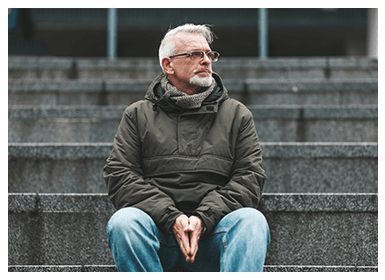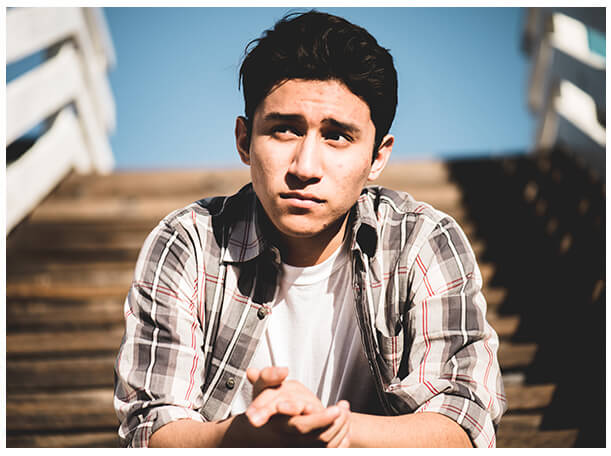Anxiety disorders affect millions of people. The National Institute of Mental Health (NIMH) found that at least 19% of people have had an anxiety disorder in a given year, and over 30% will have one at some time in their lives. People with an anxiety disorder may seem to function well, but over half of the people with these disorders have moderate to severe symptoms.
People with an Anxiety Disorder may not realize they have a treatable disorder and may think they just feel stressed all the time. The use of substances may help take that feeling away temporarily. At Everlast Recovery Centers, we treat anxiety disorders with a variety of complementary therapies to give our clients the best chance to recover successfully.


Help for Anxiety in Riverside, CA
Anxiety can be defined as excessive worrying, fearfulness, avoidance, or obsessive thinking about something that may not justify that level of response. Some types of anxiety disorders focus on one or a few specific things, while others are more general.
People can receive a diagnosis of any of these anxiety disorders:
Panic Disorder
People experience panic attacks with physical symptoms, including sweating, racing heartbeat, and chest pain. This panic can happen at any time, but many people recognize their triggers and avoid them. A diagnosed panic disorder can lead to a limited ability to go out and participate in life. People may begin to fear their panic disorder more than the thing that triggers them.
Generalized Anxiety Disorder
Those with generalized anxiety disorder may not fixate on one cause of anxiety but feel worried and overwhelmed by fears or thoughts of things that might happen. This can lead to physical symptoms like chest pain, nervousness, and muscle tension. People with this form of anxiety may report feeling stressed, exhausted, and on edge all the time.
Social Anxiety
People with a social phobia or social anxiety disorder fear any situation where they feel exposed to too many people, might have to speak or draw attention to themselves, or might embarrass themselves. Social anxiety may limit people from any social activities or drive people to seek relief from a substance like alcohol to quiet their fear.
Obsessive-Compulsive Disorde
Obsessive-compulsive disorder (OCD) is characterized by recurrent, unwanted thoughts (obsessions) and repetitive behaviors (compulsions). Repetitive behaviors such as hand washing, counting, checking, or cleaning are often performed with the hope of preventing obsessive thoughts or making them go away. However, repetitive behaviors provide only temporary relief, and not performing them increases anxiety.
Phobias
A phobia leads to fear of a specific stimulus, such as spiders, needles, blood, going in the water, or many others. People with phobias often recognize the response as irrational, but they experience symptoms of panic and desire to escape when exposed to their phobia. Phobias may limit a person’s activities because they feel anxious anywhere they might encounter their phobia.
How is Anxiety Treated?
Clinicians treat anxiety disorders with medication, therapy, or a combination of both. Research indicates that the combination improves treatment results over one or the other alone. While anxiety disorders differ, the same medications and types of therapy can benefit most people with an anxiety disorder diagnosis.

Medication Management
The most common medication prescribed for anxiety disorders is a selective serotonin reuptake inhibitor (SSRI). This class of drugs also helps treat depression. These drugs act on serotonin, a molecule in the brain involved with emotions. Many people need to try more than one SSRI under a doctor’s supervision before finding the right one.
Benzodiazepines like Valium are also used as a treatment for anxiety. However, these are highly addictive medications and have a strong potential for abuse. Doctors do not prescribe benzodiazepines as a first line of treatment.

Cognitive-Behavioral Therapy (CBT)
The type of therapy most often used to treat anxiety, CBT trains people to recognize irrational or unhelpful thoughts and behaviors. They then learn to replace those with more logical, beneficial behaviors. People with anxiety disorders benefit from identifying how irrational their fears may be and developing more reasonable versions.

Dialectical Behavior Therapy
This intensive therapy teaches people to manage anxiety through mindfulness and letting thoughts like panic or anxiety pass by. People also learn distress tolerance to accept anxiety-provoking situations better and emotional management tools to use when they begin to feel anxious.

Acceptance and Commitment Therapy
Gaining in popularity as a treatment for anxiety, this therapy focuses on teaching acceptance. People with anxiety might mean learning to accept their fears rather than fight their anxious thoughts and feelings. People also learn to determine their values, which might include social time with family or friends, and commit to working toward them.

Complementary Therapies
The activities involved in complementary therapies can help people with anxiety disorders improve their coping skills and promote relaxation when used in combination with traditional therapy modalities. Complementary therapies may include music, art, dance, meditation, yoga, and other physical activity.

Anxiety Treatment at Everlast
At Everlast Recovery Centers, each client who comes into our care with an anxiety disorder will get a personal, detailed assessment within 48 hours of arriving. Based on the assessment, our clinical therapy team will work with the client to decide on the best method of treatment for them.
With weekly visits from a medical doctor, we can address medication needs for your disorder if appropriate. We also offer all the treatment modalities listed above, including complementary treatments, in individual and group sessions.
Most important, Everlast will work to reduce anxiety surrounding treatment by offering a peaceful, supportive, and calming setting. Our clinically trained staff will make sure they understand each person’s needs and treat them with the goal of a successful recovery.



